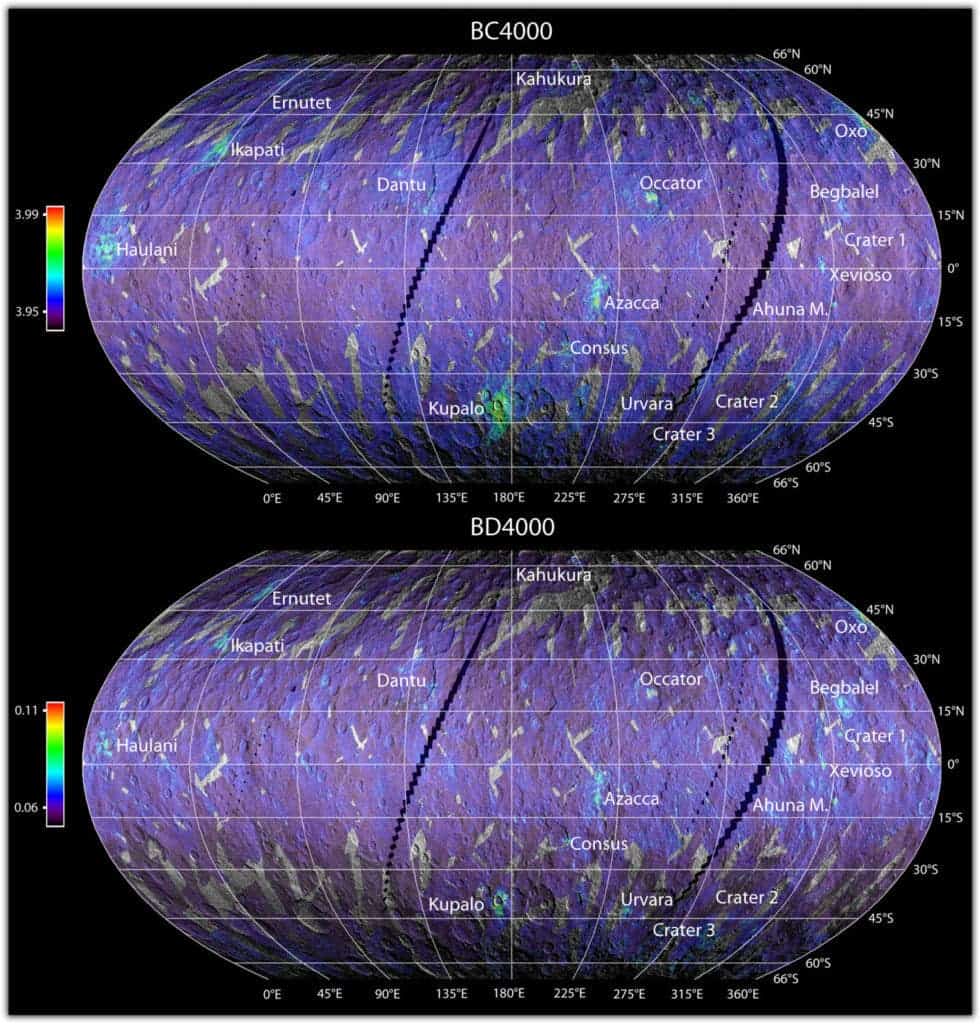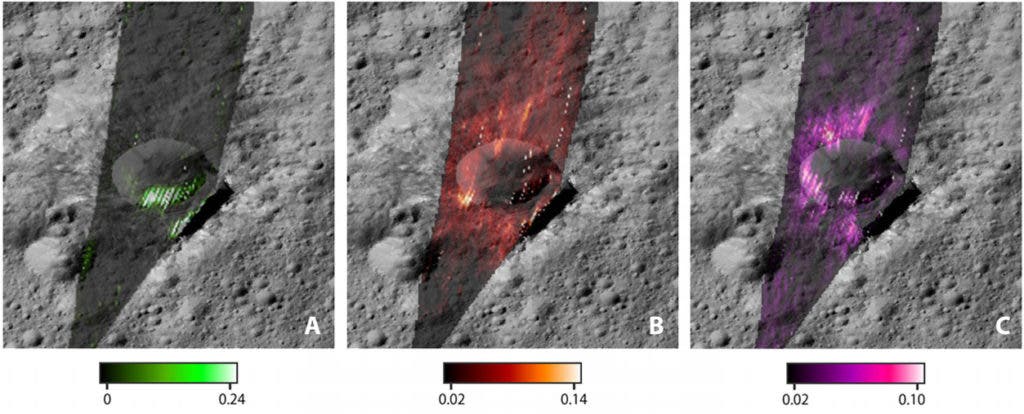Astronomers found evidence that compounds on Ceres formed from liquid water in the recent geologic past.

In a way, Ceres is both big and small. It’s the largest object in the asteroid belt, but it’s still a dwarf planet — and it’s much too small to be really considered a planet. About four times smaller than the moon, Ceres has a diameter of approximately 945 kilometers. It was first discovered in 1801 by Giuseppe Piazzi and considered a planet, but was then relegated to asteroid status. But this doesn’t mean that Ceres isn’t exciting in its own right.
The NASA spacecraft Dawn entered orbit around Ceres on 6 March 2015, allowing astronomers to study it in unprecedented detail. In a new study, authors report that Ceres is still evolving.
Using the visible-infrared mapping spectrometer aboard Dawn, they observed significant quantities of magnesium-calcium carbonates covering most of the dwarf planet. Finding carbonates — a salt of carbonic acid (H2CO3) — is extremely important since it is usually a sign of water. Judging by the current analysis, astronomers now believe water amounts to about 30% of the dwarf planet’s mass.
Carbonates are abundant and ubiquitous across the surface, but variations in the strength and position of infrared spectral absorptions indicate variations in the composition and amount of these minerals. Also, not all carbonates are hydrated, and therefore not all of them can be connected to water.

Ceres appears to have differentiated rocky core and an icy mantle. Researchers have known for quite a while that Ceres probably had liquid water in its recent history (and perhaps still has), but the wide distribution of carbonates, and therefore, the water, is surprising.
“The different chemical forms of the sodium carbonate, their fresh appearance, morphological settings, and the uneven distribution on Ceres indicate that the formation, exposure, dehydration, and destruction processes of carbonates are recurrent and continuous in recent geological time, implying a still-evolving body and modern processes involving fluid water,” the researchers write.

The authors suggest that the connection between carbonates and extrusive surfaces implies that carbonates are possibly brought to the surface by rising subsurface fluids. This could indicate that beneath a frozen surface, there is an ocean of liquid water. The carbonate mapping indicates active geological processes such as upwelling, excavation, and exposure of salts.
Ceres doesn’t get nearly as much love as Pluto does, but given recent findings, perhaps it should.
The study has been published in Science Advances. DOI: 10.1126/sciadv.1701645


